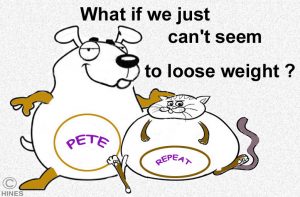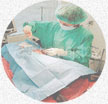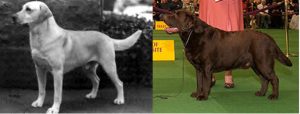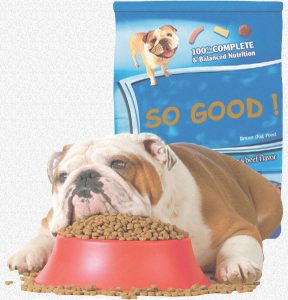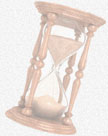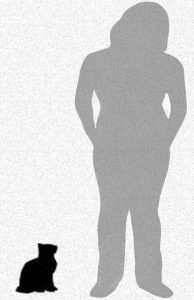What If We Just Can’t Seem To Lose The Weight?
Fat Dog Fat Cat
Ron Hines DVM PhD
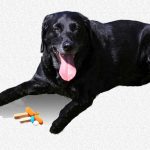 Meds That Can Interfere With Your Pet’s Thyroid Test Results
Meds That Can Interfere With Your Pet’s Thyroid Test Results
 Does One Low Thyroid Test Or High TSH Mean Hypothyroidism?
Does One Low Thyroid Test Or High TSH Mean Hypothyroidism?
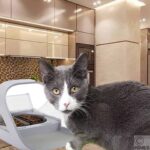
Hi, I’m Repeat and this is my friend, Pete. We know there is already plenty of pet weight-loss advice on the Internet. Some of it is good. But we’ve noticed that they all basically nod their heads in agreement that there is a problem but are light in offering practical solutions. So, Doc Hines thought it might be better if Pete and I just explained the problem to you ourselves – after all, who knows what’s going on better than us, your cat and dog. But if your own pet is on medications, go here first.
Many veterinarians feel that obesity is now the #1 pet health issue in high-income western-oriented countries. Study estimates vary, but close to half of us cats and dogs are probably carrying around too many pounds or kilos. It varies depending on the area, urban more likely than rural, high income rather than low, how the particular pet census population was selected, family structure and how overweight was defined. To read more about that ask Dr. H. for Zoran2009 & Laflamme2006.
Most veterinarians would consider a cat like me who is greater than 20% over his ideal weight as being fat (obese). Pete is indignant about that, he always says he “carries his weight well”. Pete really does not dwell on his weight issues – he’s an easy-going friendly mutt – a Labrador X Basset cross. Just pat his head and he’s in Heaven.
Just about everyone who discusses pet obesity says somewhere that dogs and cats like us are fat because the number of calories they take in while eating is more than the number of calories they burn (expend) during the day. Can’t argue with that. Just about everyone considers fat pets to be at a greater risk of many health issues down the road: diabetes, arthritis, heart stress, exercise intolerance, lipomas, etc. One can’t argue with that either.
Folks have also found things that fat pets tend to have in common: We are generally “fixed” (neutered). Usually, we were neutered at much too young an age. We tend to be mature or older when our obesity-related health issues became obvious. We tend to be the cats and dogs that are highly pampered by our owners. Our owners consider us family members or best buddies. We are fed an energy-rich (fattening) commercial diet and we get little exercise. We tend to be the pets of owners with the most intimate bonds to us – those who see us as their furry children (they’re the “pet parents” like Dr Hines and Maxx). Most importantly our owners tend to be unaware of our chubbiness or minimize its importance.
If you have the time to browse through a lot of published studies, you will see that the conclusion on risk factors for us being fat are similar but not always identical. Many of these publications also give mathematical formulas or tables to calculate the correct food intake for us based on our weight. Those formulas are scientifically correct – but next to worthless for pet owners like you or Doc dealing with a loved family member. You see, the underlying problems are in your human emotions – not your pet’s – certainly not the math. You cannot write a formula that defines or quantifies that love because it exists in a different dimension.
What Are The Risk Factors For Us Dogs And Cats Becoming Fat?
The Neuter Factor
Most pet owners would have a hard time living with an ex-tomcat like me if I was still sexually intact. I have this thing about urine spraying. Just comes natural to me – a territorial/sexual thing I inherited, I suppose. And unspayed girl cats can be quite a pain with their repeating heat cycles, antsy meowing and dashing out the door. Pete’s personality wouldn’t change much whether he was neutered or not. His owners don’t let him run loose unsupervised. He’s not aggressive with the UPS driver and definitely not involved in that pet overpopulation thing. We both know that girl dogs can be messy twice a year. But whatever the reasons, societal pressures cause most of us to end up eventually getting “fixed”.
When you neuter us, it causes profound changes in our metabolism. Reproduction was only one of the many jobs of the sex hormones that we lost. They were intricately involved in many of our basic processes and, once gone, the amount of food we could eat and stay lean became considerably less (-20-30%). Over time, that adds up. True, if you feed us less or less caloric stuff we definitely won’t get fat. But you already know that that is easier said than done. (read here & here) Because of that, feeding us amounts suggested on the food packaging, can or sack can be too high. Neutered male and female dogs are more likely to become fat than intact dogs. That fact is more pronounced in male dogs like Pete than females dogs and more likely in toy and small canine breeds than in larger breeds. No such data I know of exists for us cats.
Fad Genetics & The AKC
As much as it pains me, Pete and Doc to bring this up, our dog-breeding industry – represented by the AKC, KC and their European equivalents such as the VDH are highly susceptible to fads, trends-of-the-moment, ill-conceived notions and total ignorance of the health consequences of tinkering with body-trait genetics. Us cats face that same danger. Far too few of these people bother to consider if selecting for a particular body shape, conformation, skin type, hair coat, facial form, etc. might have negative health consequences for us down the road. Some of those breeders live for their moment of glory, others for financial gain; but we pets and our veterinarians like Dr. Hines have to deal with the consequences of their foolish actions for the rest of our lives.
International dog shows stand out in setting these trends. Doc is going to use Labrador retrievers as an example because Pete is half Lab and Doc’s dog Maxx 
When the progeny of dogs and cats no longer look like they once did, it is because their genes have been altered through select breeding. Through the 1960s, Labrador retrievers were a lean, long-legged, considerably-smaller-framed dog. Unfortunately, over the years it was the “larger-than-life” “unique” dogs that caught the judge’s eye and the public’s fancy. Now these unfortunate stubby legged, barrel-chested, arthritis-prone, cruciate-tear-prone portly dogs are far too numerous. Sure, you can still purchase excellent Labradors; but you have to go by what you see, not by long impressive pedigrees, fancy names, best-of-show awards and Hollywood movie roles. Many other popular breeds share these same, unfortunate trends. You want a cat like me with good genetics? Visit your local animal shelter for a random-bred cat. The genetics of cats like me are considerably less altered because most of us are the result of accidental matings with the toughest tom cat on the block. When that is not the case, the same warnings about dogs apply.
The Realities Of The Pet Food Industry
There is lots and lots of money to be made providing food for dogs and cats. Companies have spent many dollars and much time analyzing pet owner motivation and preference. They learned early on that there is often a hard limit to what you will spend on a Mars SNICKERS® or a Nestlé 100 GRAND®. But Mars, Nestlé and the others know that there is almost no limit to what you will spend on their pet food lines (Eukanuba™, Purina™, Blue™, Royal Canin™ etc.). (read here)
It’s accepted among most veterinary nutritionists that high carbohydrate content (primarily grains and vegetable starches) in these diets contribute to the pet obesity problem. But you won’t find that in most of the articles these veterinary nutritionists publish. One might consider that the reasons for that could include the fact that the pet food industry underwrites almost all of those studies. Read more about that. (rpt ref & here) Those that pick up the tab generally receive deference.
How many companies do you know of that encourage you to use less of the products they make? Would they be in business long? There are always pictures of lean pet and lean owners on the label – no guilt trips needed while shopping. When it comes to organization (hierarchy) within these Megapetfood giants, the marketing and accounting departments always trump the lowly nutritionists on their staff. Pet food companies never show commercials of owners measuring out their pet’s food – they just pour it in til the bowl is full. Doc has worked as a veterinarian around the world. It’s been his experience that when these companies arrive at the shores of a particular nation, it’s not long before the pets there become fat. Of course these companies don’t arrive until incomes there have risen high enough to make it worth their while. Since companies like Mars, Nestlé and Smuckers also make people confectioneries, it isn’t long before the human residents in these places become fat just like us.
The Love Factor
Over the years, Doc noticed that pet owner attitudes toward their dogs and cats were undergoing great changes. The changing lifestyles and changing realities of the 21st Century had altered the relationships between people and their pets in remarkable ways. What were once “domestic house pets” became “family members”. What were once pet owners were now “pet parents”. What were once animals were now “best friends”. A dramatic “sea change” had occurred. When he contemplates why this might be, he tells us that he attributes much of this to the transformational art of Walt Disney – the man who gave the gift of empathy and voice to animals.
Doc believes that when you make decisions with your heart rather than your head, those decisions are likely to be quite different. The decisions pet owners make for us cats and dogs are now “interpersonal” decisions operating under the same rules of love, affection, nurturing, bonding and intimacy as between you and your human partner. Most of the decisions folks now make for us are now based on how they might express to us their love. In many cases, that centers around food indulgence. It certainly does for Doc and Maxx. Psychologists call it the affectional component in family decision-making. the best studies in us pets that confirm that best were done in Munich, Germany. (ask Doc for Kienzle1998 & Kienzle2006) ; but others in North America have confirmed it as well. (ask him for Lund2005 & Lund2006) and see here) How we interact with the humans and animal in our family and give them encouragement for certain behaviors is extremely complex. Many of the clues the humans give to us pets are non-verbal and poorly scientifically understood (network phenomena). Our owners are usually not even aware that they give them; but cats like me and dogs like Pete are exceptionally good at reading them. One can be equating eating with love and bond strengthening.
Your Pet’s Age
Weight tends to creep up in dogs, cats and our owners as we reach middle age. In all of us that occurs for the same reasons. But usually poor eating habits in all of us are established early in life. It’s just that as our body’s metabolic needs and physical activity level decrease with age our food intake does not decrease correspondingly. They are not well linked.
The Deceptiveness of Body Size and The Energy Richness of Pet Foods
Once you accept a small dog or cat as a family member, you rarely think about how small it really is in comparison to you. You are used to serving a plate of food for yourself and your human family members, so it is quite natural to be overly generous and serve up too much to your pet. Most cats and dogs, being obliging creatures, will try to finish whatever you give them.
Another deception are the pet foods themselves – particularly the dry ones. They are intensely calorie-rich. Some of that is due to the lower cost of the high-caloric, starchy ingredients and fat the products contain. Buy cheap-sell dear is always the company motto. But much of the reason lies in the pelleting process itself. A lot of starch is required to bind the kibble together and intense heat and pressure are required to produce a non-crumbly product. I think of it like a car I once saw coming out of a crusher as a small steel block at our neighborhood junkyard. You see, I once snuck out and that’s where my owners found me. Luckily, I had an identification tag on my collar, and I’m microchipped. Veterinarians have found that as few as 10 extra kibbles a day, given to a cat, will increase its body weight by 12% in just one year. Premium pet foods, in particular, tend to be energy-dense.
Boredom And An Indoor Lifestyle
Obesity is considerably more common in indoor pets like us than outdoor pets. Lack of activity and boredom probably play a part in that. When I have nothing else to do I eat. The increase in dog and cat obesity has also paralleled the increase in two-worker families. That means I spend a lot of time alone. In-and-out cats used to be the norm. Although that sort of lifestyle exposed me to many other hazards, obesity was not one of them. (ask Doc for Robertson1999, Colliard2006 & Colliard2009)
Is Fat Inert? Is It Just Flabby Space Occupying Blubber?
Most of us are brought up to regard fat as something inanimate – a blob of homogeneous lard without much use other than as a source of energy and padding. But fat is much more than that. Although it is composed mainly of fat storage cells (adipocytes), Those cells have a number of real-time, energy-related metabolic functions: Adipocytes keep track of energy flow into and moving through the body. In response to that flow, these cells liberate hormones and messenger compounds (such as FAHFA) that have a great many functions (similar to a traffic cop). (read here) Fat cells also produce leptin, a compound that normally tells your pet when it is full. It promotes the retention of fat-soluble compounds that pass through your pet’s body. Fat also plays a part in the synthesis and storage of male and female hormones. It modulates inflammation through the body. (read here) Because of that, too much fat is thought to be “pro-inflammatory” – the root of many diseases, through the over-release of adipokines. Moreover, the fat that accumulates under your pet’s skin appears to have different functions and fate than the fat that accumulates within its belly. Studies in livestock have shown that neutering an animal not only alters (increases) total body fat but the fat’s distribution as well.
Why Is It So Hard For Us Cats And Dogs To Lose Weight?
Well, I’m a cat and it isn’t.
This is a people behavior problem, not a cat or dog behavioral problem. If you send me to a cattery or pet resort, I am sure I will lose weight. Pete will lose weight at a kennel. But if you yourself do not make the right lifestyle changes at the house, we will oblige you by regaining the weight when we return home. For most owners of overweight dogs and cats like us, minor lifestyle changes are not sufficient. Success requires that you make major lifestyle transforming changes in your behavior and attitude toward us – how, what and when you feed us. You are not going to change Pete and Repeat. You can only change yourself. Purchasing some lo-cal diet at the big box store or from your veterinarian is not going to cut it. We’ll just refuse to eat it or eat more of it than we should. Besides, who knows what they put in that stuff.
Are Our Owners Really The Best Judges Of When We Are Overweight?
Doc often writes that nobody knows your pet as well as you do – certainly not your veterinarian. That’s true when it comes to subtle changes that might be early warnings of ill health, mood and behavior. But that is not true when it comes to judging if your dog or cat is overweight. Veterinarians are considerably more accurate in noticing that than pet owners are. Pet owners are not particularly good at noticing when their dog or cat is too thin either. It is the fog of love – glossing over the imperfections in those we care for. Besides, many pet owners like the looks of a “well-fed” portly dog and cat like Pete and me. Besides, most overweight pets are not the extremes. Even a pound or two above normal body weight in a small dog or cat might be significant.
Veterinarians have developed Body Condition Scores to keep track of their client’s mature weights (not you, us). You don’t have to go to that extreme. Say you own a dog like Pete. Look at it from the side. Does its belly slope upward toward its groin or is it a straight line or even sagging like a hippo? Now look at it from above. Does the pet’s body get narrower just before its hips as it should or does it look like a barrel with legs? Does its tail sprout normally from its spine or is it “apple-cored” with a bunch of wrinkles? Can you see its last two ribs when it’s bending over eating? Can you feel them? Has your older dog developed lipomas (fat tumors)? Trim and lean dogs rarely do. You can judge your cat’s body condition in roughly the same way. Of course, it’s more difficult in long-haired cats. Perhaps a summer cut at the groomers.
Some Things Our Owners Think About Us That Really Aren’t True:



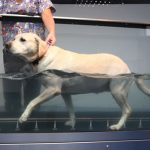




Are You Two Writing This To Make Me Feel Guilty?
Not at all. Actually, Pete and I put this together to make you feel better. We wanted you to know why this problem is so hard to deal with, and we don’t want you to get down or feel guilty about not making the rapid progress you had hoped for. We love you just as much because neither of us are worriers like you are. We live in the present – the here and now. You consistently ponder the past present and future all at once. You’ll be on this planet long after we are gone, and we want you to have found memories of us – no guilt. Don’t let anyone hang a guilt trip on you about our weight. We don’t look in mirrors, we don’t get face lifts. And we wouldn’t feel a kibble better about ourselves if we were thinner.
Well, Aren’t You Going To List All The Diseases That Are More Common In Fat Dogs And Cats To Scare And Motivate Me?
No. You can find plenty of that in the references in this article, or you can just take our word for it that there are a lot of them.
Motivation – The Key To Success
Strategies for pet weight loss are important – but your motivation as the pet owner is considerably more important. We are hoping that some of the stuff we said so far might give you a better perspective on the issue. You already know that past habits become a way of life and are not easily changed. To do so requires enthusiasm and support from the friends around you. Perhaps you can team up and form a club or an online Facebook interest group for folks that face the same issues. Doc has a link to Facebook on his webpages, but I don’t think he has ever gone there. He’s too involved with answering pet health emails and fixing website issues. Don’t tell anybody, but he doesn’t even own a cell phone. So, the two of us did a Google search and didn’t find any – but perhaps we just didn’t do it right. It’s hard to operate a keyboard with paws. Just the fact that you have read this long-winded article of ours increases your chance for success. Whether you follow our suggestions or not, it shows you are serious, recognize a problem and have enough initiative to explore you and your pet’s options.
Strategies For Success
You already know that there are powerful forces working against success:
- The natural inclination of animals to eat whenever the opportunity arises and to eat all that you put in front of them.
- Commercial market forces producing high-carb energy dense pet foods – ever seen a fat dog or cat on a can or bag of chow?
- The Natural Inclinations of Love=nurture=food.
- The inclination of people to start with enthusiasm but over time to be diverted by various life events.
- Our tendency to look for quick easy fixes for complicated problems.
Consider these strategies. But remember, winning strategies for one pet owner are not necessarily the ones that will win for you.
1) Have your veterinarian check out the general health of your pet. You don’t want to be dealing with other health issues during a weight loss program. Your veterinarian can do a physical examination, confirm that the pet is actually overweight and send off general health screen lab work. Please don’t let them stick a sharp needle into our bladder to obtain a urine specimen. How would you like that done to you?
2) Remember that not every time is the right time to begin.
3) Take photographs of us from the side and above and pin them on the kitchen fridge. You can put a pinup photoup as well – a svelte (lean) dog or cat if you wish.
4) Purchase a good quality scale to weigh us. Commit to regular weigh-ins (weekly or more frequently) and record your diet and exercise progress in a journal. A treat for you and a treat for us if we meet our goal. That can mean no weight increase, not just a decrease.
5) Never feed us directly from a pet food sac or can. Always use some intermediate measuring cup that requires several scoops to give the food amount you desire.
6) Try not to feed us when you are hungry. Feed us after you eat rather than before.
7) Do a food intake inventory and weed out the big boys. The usual offenders are milk, in between high-caloric snacks and family members who sneak those things in. Don’t forbid treats, just replace them with something less caloric. If you cannot do that, give them in smaller portions. If not, be sure to respect the fact that they are adding substantially to your pet’s daily calories.
8) If it’s more people than you and your pet, decide who is going to be responsible for feeding us. You won’t get anywhere with conflicting messages, goals and problem-solving skills. You need to be sure that all family members are on board.
9) Feed us three or four 10-15 minute small meals rather than one large one. After a specific time is up, put the food back in the fridge.
10) Feed multiple pets separated if that is at all possible.
11) Plan on frequent food quantity adjustment based on weigh-ins. Cheap scales often lie. But they usually lie by about the same amount each time. You can purchase a quality scale, or you can weigh something about our weight on a quality merchant’s sale and reweigh that item from time to time at home on your scale.
12) Feed us more high-bulk, energy-poor foods. It is hard for many of our owners to bring themselves to giving us itsy bitsy amounts of energy rich diet. Rather, try bulkier higher fiber ones. You can feed dogs like Pete cabbage. I have seen him eat it. It has has virtually no calories, and dogs are usually happy to eat it. I won’t touch the stuff; but if you chop it fine and mix in some meat or fish broth you never know, I might. Doc lists other high-bulk, low-calorie thing you can add in the part on fiber that is farther along in this article.
13) Delegate the task to the least likely in the family to fail or have that person, or you prepackage the correct amount in single-meal containers.
14) Set realistic goals. Don’t plan on going for the Gold. Remember that relatively small reductions in weight can produce significant benefits for your pet over time.
15) Find a coach. Videos and leaflets available at your veterinary hospital are of limited usefulness. They usually hawk some product on the shelf- a prescription only diet – a cookie vitamin mix with secret ingredients, etc. But weekly calls from a sympathetic and motivated vet tech with personalized advice can be considerably more helpful. Some veterinarians will reward their telephone coaches for a successful weight loss case. There are even veterinarians whose hospitals offer this for a fee. Just remember, there will come a time when you will have to maintain the program by yourself. A six-month weight loss program is of little or no value if you aren’t going to stick with it. Up-down weight changes can actually cause more harm than good.
16) Rotate your pet’s diet frequently (every meal). Monotony of taste and visual presentation encourages over-consumption. To get the same pleasurable effect, with time your dog or cat might be inclined to eat more of it.
17) Puzzle feeders are good at reducing a pet’s total food consumed and discouraging boredom.
18) Many pets resist diet ingredient change. Consider topping off the new diet with one of the more favored old ingredients until your cat or dog become accustomed to new flavors and aromas. This is particularly true for fat cats like me. None of us want a cat to go off food and develop hepatic lipidosis. Some pets will accept a new diet that is served warmed up, long before they would consider eating it cold from the fridge or at room temperature.
19) Your pets should never be completely full – it is unnatural for them to be and encourages a sedentary, sleepy lifestyle.
How Much Should I Feed? How Fast A Weight Loss Is Safe?
If your dog or cat’s diet formulation is to remain unchanged, cut the total daily amount by one quarter the first week. Proceed to lower it more depending on the pet’s next weigh-in. A healthy cat or dog can usually tolerate a 1% weight loss per week (3-4% per month). If they are not achieving that, they are still consuming too many calories. Most knowledgeable folks believe that anything over a 1% weight loss per week is undesirable and possibly dangerous. Some of that rapid loss could be in our lean body muscle which is something none of us want. Not all dogs and cats of the same breed, age and body size require the same amount of food. Pay attention to your individual dog and cat’s needs and progress rather than insisting on some pre-plan standards. Be prepared to make change when necessary.
Should Every Overweight Pet Go On A Weight Reduction Diet?
No.
There are times when other pet health issues take precedence. Pets in tenuous health do not need the added stress of a diet. There are also dogs and cats in the twilight of their lives – set in their ways and best left to live out their days in the comfort that they know. There are also situations where diet success is unlikely to be achieved. Circumstances beyond your control, irresolvable issues, things that must take precedence.
As I mentioned earlier, you can’t go wrong by beginning with having your veterinarian do a physical examination on us, review our health records, discuss our situation with you and perhaps send out some general health screening tests I also mentioned earlier. Unless you have buying products in mind, explain to your veterinarian and his/her technicians that you came because you value your vet’s wisdom and advice – not to buy products. Pete and I have noticed that marketing and “compliance” is everything these days. We notice that when we leave the animal hospital, our owners are lugging a lot of products they had no intention of purchasing when they bought us in. There is hardly room for our carriers on the back seat. Pete and I decided that if you get shunted to techs with rehearsed speeches or placed in front of a slick video, you probably should take us elsewhere.
Can’t I Just Exercise The Weight Off Of My Dog And Cat?
That can be very hard to do. Exercise is great for any pet. But its benefit rarely includes significant weight loss if our caloric food intake is not reduced at the same time. Short of entering your dog (or me) in the Iditarod, you will probably not make headway in our weight loss when too many calories are coming in. What exercise does do is improve our heart and blood circulatory function, improve our bone strength, offer us a fun activity with mental stimulation and, perhaps, help our bodies to spare lean muscle mass during our weight reduction program.
Overweight and older dogs need to start at walking or jogging program very slowly and cautiously. We overheat easily. We are more prone to ligament injury and sprains that are slow to heal. Our enthusiasm is often greater than our abilities. Stop frequently to let us rest. Bring ice and water along. Be sure our toenails are clipped short, our collars are not too tight.
Keep us on a leash until we are quite experienced. And always be sure we have a way to be identified and returned if we get lost. Retrieving objects is great fun for dogs like Pete and equals or exceeds walking or running in its benefits. Tug of war with a rope is another great option and improves dental health as well. Again, don’t overdo it initially and be quite cautious in encouraging added activity in the arthritic, infirm or elderly.
Cats like me are another story. We are not by nature very active in a home setting because we are not by nature pack animals. Our main impetus for exercise in the wild was hunting. When we were full, we went to sleep. Only seasonally did we roam large areas seeking to engaged in romantic endeavors with other cats. Doc does not encourage that for your cat. He believes that the dangers of feline outdoor living far outweigh any weight loss benefits they might produce. But most house cats enjoy play activities – toys, bags, boxes, motorized mice, laser pointers and the like and there are escape-proof systems that allow cats to be in restricted areas out of doors. Us cats can also be taught to take walks on a leash. Just be sure to use a harness with me rather than a neck collar, and please please do not rely on the cat-friendliness of dogs (or other cats) that we meet on our walks.
A possible alternative for us cats and dogs is a long kennel stay for more exercise and better diet control. I was offered that at one time. I hated every minute, every second, of it at the Bideawee Cat Resort and Spa (I probably have some Scottish Fold in me) but I did lose some weight there. However, when I got home I faced the same overeating issues and gained all the weight back.
How Should I Choose Or Prepare My Dog And Cat’s Weight Loss Diet?
Dr. Hines, Pete and I are big believers in having you prepare our food at home from the same ingredients you eat. As you already know, we will lose weight even if you do not change our diet but just feed it less of it. But you don’t have to feed us less. You just have to tweak the ingredients. When you prepare our food from scratch, decisions remain in your home – not at some multinational industrial food manufacturing plant listed on the NASDAQ and located God knows where and run by people who don’t even know us. How would you like to dine at a restaurant where the kitchen was run by a large committee and CEO instead of a chef? You be your cat and dog’s chef.
The alternative is to choose one the prepared weight loss diets all pet food companies sell. Some brands are sold on the big box food store aisles, others are restricted to distributed through your veterinarian. By the way, do you buy all your food from your doctor? Do you shoot a cow? Pete and I have always wondered where you get it. The dog and cat food companies all pay to have “scientific studies” performed by renowned veterinary nutritionist and each company publishes testimonials that their product is undeniably the very best of the lot. (read abstract here) or Ask Doc if you want a copy of the entire article paid for by Hills, and he will usually send it to you.
Commercial weight reduction diets for dogs and cats often do work. They all rely on lowering your dog and cat’s diet fat content, upping its protein content and lowering its carbohydrate content. Above all, they generally contain large amounts of calorie-free sugar beet fiber to give your pet a sense of stomach fullness. Just as importantly, these bulky low-cal diets also give you, the pet owner, the feeling that your pet is not being deprived of a full meal. However, cats on these dry kibble diets rarely if ever drink sufficient water to stay well hydrated. That can lead to other serious health problems for me. (read here & here) That’s why for male cats like me at least, canned diets are a better option. Although, over time, those canned weight loss diets tend to cause me considerable more gum and dental disease. There are ways to avoid that too. (read here) New formula over-the-counter hard dental chews can minimize gum and tooth disease that too – if you can get me to accept them. I know that Pete and other dogs love them. Biscuits like standard Milk Bones are completely ineffective. As a cat, I personally recommend that pet owners like you prepare their own moist diets for me and Pete from scratch at home to avoid many of the potential problems that are due to the way commercial pet foods are manufactured. Making your cat and dog’s diet at home also allows you to avoid carbohydrate glut which, among other things, encourages obesity. Read about that here, here and here.
Cats, in particular, require minimum levels of animal fat in their diets below that they do not thrive (~10%). That minimum level might not be reached if the home-prepared diet you make relies on very lean meats with no additional fat added. Making these sort of diets at home also allows you to keep the protein content higher than that found in many off-the-shelf diets. High protein is though by many to help preserve lean muscle mass during the dieting process. High-protein diets only become questionable in dogs and cats when there is evidence of kidney function decline (high blood creatinine). The closest reliable thing to a high protein, starch-free prepackaged product is probably Wysong’s Epigen™ line. If you go that rout, discuss your planned use and your pet’s body condition with their nutritionists since those diets are not fiber-rich formulas formulated for weight control.
You can bend the ingredient recipe of all nutritionally complete home-prepared dog and cat foods a bit. Up its fiber and protein content and lower its fat. As long as you control the amount you offer your pet should gradually lose weight on such a diet. If you just feed more of it, nothing is likely to change. Doc also emphasizes variety in ingredients – one meat and high fiber ingredient in one prepared batch – another in the next. He always suggest that ingredients be lightly cooked to avoid bacterial and parasite contamination. Ground meat products need to be more thoroughly cooked than slab meats. That is because the grinding process distributes bacteria throughout the meat whereas slab meats when contaminated are generally contaminated only on their surfaces.
A bulky, energy-poor, (energy poor = calorie poor), fiber-fortified diet is the key strategy in commercial weight-loss pet foods. That added fiber in commercial pet foods (on a dry weight basis) can range from 7-17% (I would be highly cautious about feeding products that are over 10% fiber). Most producers list the fiber source as powdered cellulose – a byproduct of the lumber industry. Essentially, it is finely powdered wood. This type of fiber (insoluble fiber) passes through your pet’s body essentially unchanged. Cat’s and some dogs do not tolerate the high-end levels well because of fiber’s laxative qualities. Another source of fiber in pet foods is sugar beet fiber – a byproduct of the sugar industry that retains very little of the beet’s sugar.
Most of Doc’s clients, preparing high-fiber diets at home, rely on cooked carrots, canned or cooked and unsweetened, unspiced pumpkin and ground, well cooked broccoli, wheat and oat bran. Raw carrots and broccoli, when accepted, also work well as dental chews; but they can provoke loose stools, diarrhea and tummy aches.
There are those that rebel against adding any plant ingredients such as fiber or vegetables to a cat or dog’s diet. They claim it is unnatural to do that with carnivores and that doing so prevents the absorption of other nutrients in the diet. They refer back to an article that was actually quite positive in its findings on the benefits of fiber in cat diets. (read here) and say you must practice “tough love” and just feed your cat and dog less. They believe that it is fundamentally wrong to feed a carnivore stuff they would not naturally consume. If you have the type of philosophy you can go with that. Doc personally doesn’t. Pete and I aren’t big on vegan diets either. (read here)
The Pet Food Companies And Many Vets Say That It’s Table Food That Make Us Fat – Is That True?
No
If you provide us with too many calories in a day, we will get fat. It doesn’t matter if that is a calorie from a can or bag of pet food or a calorie from the foods that you eat. There is a thought that a calories supplied by protein have advantages over calories supplied by carbohydrates (starch, sugar) or fat because a pet spends more calories processing proteins than the other two. But that’s irrelevant when you purchase commercial diets because commercial pet foods are all packed with carbohydrates.
Still, Doc is not a fan of feeding pets your table food leftovers indiscriminately in any substantial amounts. Like children, dogs and cats tend to go for the sometimes unhealthy flavorful stuff before the healthy. Table leftovers, fed to dogs and cats, need to be as nutritionally balanced to meet your pet’s nutritional needs as they should be to be for you to meet your somewhat different nutritional needs. The reason that some studies found that pets that receive table scraps tended to be overweight is that the people who routinely give them tend to be the ones that overfeed and overindulge their pets everything.
Get Your Young Cat And Dog Off To A Good Start
Eating habits, metabolic pathways, taste preference, and greater susceptibility to fatness (adiposity) are established when your dog and cat are still quite young. You never notice negative changes then because the effects occur much later in life. Our first months are the time you need to guide us toward a healthy adult lifestyle. Once bad habits are ingrained, they can be very hard to change. We know that from events in our own lives.
Your puppy and kitten also have the potential to gain non-fat body weight at a faster rate than what promotes their long-term health and longevity. Studies to confirm that are rare – one in dogs (read here) and none in cats, although one mentions it in passing. (abstract here) Valid studies are expensive. They can take most of a research scientist’s career and would probably be opposed by the radical animal rights groups of today. But in every other species of animal examined, it was the case. (read here & here) It is called dietary or caloric restriction. Most research scientists believe that it is during that early growth period that all animals develop their final number of fat cells (adipocytes). Once those cells are present, they shrink and expand depending on the calories at hand – but the majority never go away. (read here) Others believe that some fat individuals have fewer fat cells, but the ones that they have are larger (expanded with triglyceride oils). Those are the individuals who were not fat in their youth but became fat later in life. It appears to some that the individuals with the larger number of fat cells have the hardest time losing weight. Those are all theories – not facts.
Does The Age At Which I Had My Pet Neutered Matter?
Yes
There are many well-funded and mostly well-meaning forces advocating that you have your dog and cat neutered just as soon as you can. It is highly politically incorrect to question that or advise otherwise, and we know that Doc has caught a lot of flack for doing so. But all hard scientific data and observations suggests that neutering puppies and kittens before their first heat cycle can have major, non-correctable negative health consequences for the rest of the pet’s life. That including a tendency toward obesity. Advocates counter that all you have to do to keep your dogs and cats trim is feed them less. That is scientifically true, but Doc and the two of us know how really tough that is. Besides, obesity is not the only health risk we face after pediatric neutering. It is actually one of the more minor ones. (read here) When you see articles and online advertisements that oppose our view, they are invariably written or underwritten by groups and individuals with “a dog in the race”. Well-meaning folks who are desperate to solve the pet overpopulation problem and are in complete denial of the scientific evidence opposing it. Doc, Pete and I don’t believe you can correct one wrong with another wrong.
What About L-Carnitine Supplements and L-Carnitine Supplemented Commercial Pet Foods?
L-carnitine is a compound that your pet’s liver and kidneys synthesizes from the amino acids lysine and methionine when in the presence of vitamin C. It is involved in the breakdown of stored body fat. L-carnitine is hyped in the popular press as a weight loss supplement. You can buy it in capsules in any health food store. But there is absolutely no scientific evidence that it is helpful in losing weight for any of us. But some pet food companies have jumped onboard and added l-carnitine to their weight loss diets. It’s probably harmless since their primary source of L-carnitine is red meat.
What If I Have A Fat Pet And A Thin Pet?
Doc doesn’t know of any effective method of dealing with that other than separating them at feeding time. We don’t either. Some folks suggest some sort of gated contraption that the fatter pet cannot pass through. Or that you take advantage of a short fat pet’s inability to reach food placed on high tables. We believe that would likely be a major psychologically stress for the chubby one. In our case, both of us. I know that Pete and I would be quite perturbed if we smelled food and couldn’t get to it.
You are on the Vetspace animal health website
Visiting the products that you see displayed on this website help pay the cost of keeping these articles on the Internet.

